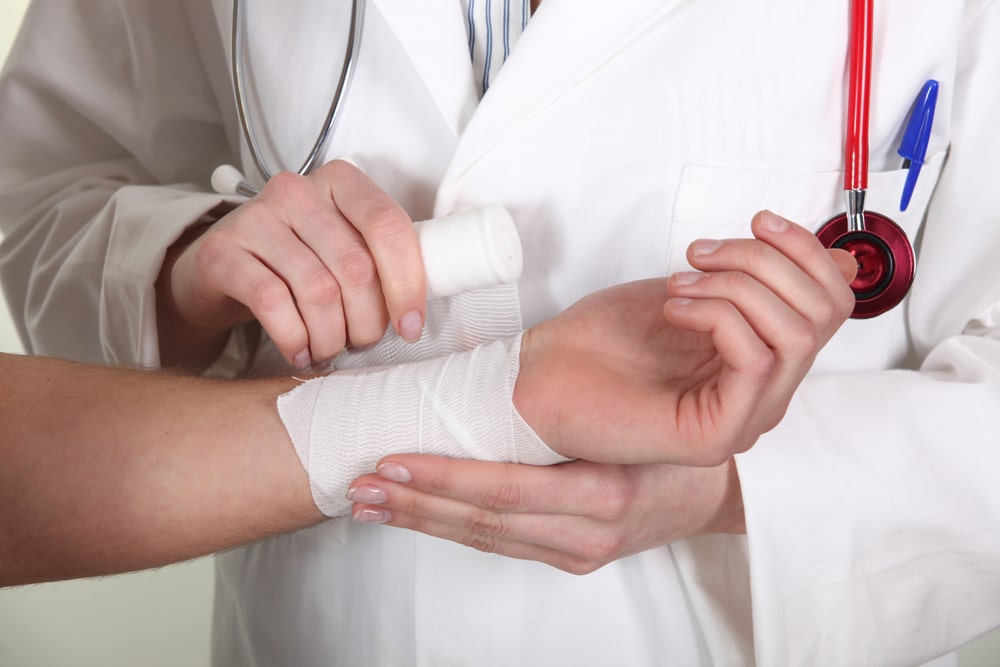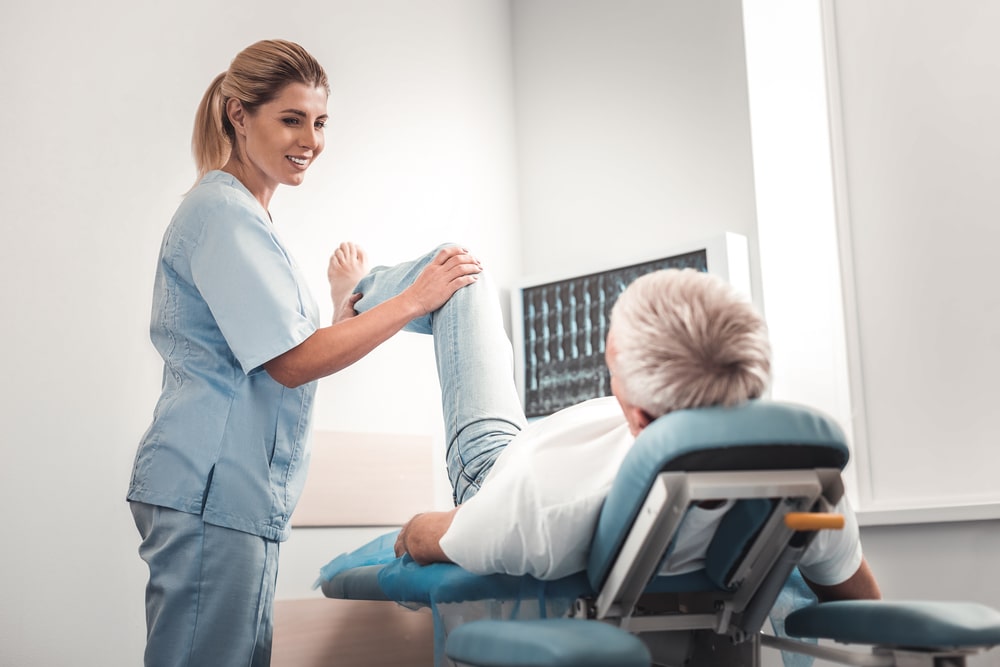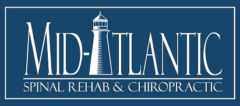
Why You Need Chiropractic Help For Injuries
Why You Need Chiropractic Help For Injuries
A collision involving a fire truck occurred at Frederick Road and North Prospect Avenue in Catonsville around 8:00 pm on Friday, sending multiple individuals to the emergency room. According to Wilkens Precinct officers, the driver of a civilian vehicle crossed the double yellow line and collided with the fire truck. Baltimore County Medics transported the civilian vehicle’s occupants to a local hospital with non-life-threatening injuries. Details regarding the number of injured individuals in the civilian vehicle were not provided. Fortunately, the fire truck was not in emergency mode, and no firefighters were harmed. The Baltimore County Police Crash Team is investigating the incident.
After an accident, a chiropractor can provide assessment and treatment for injuries such as whiplash, back pain, and soft tissue injuries. They use techniques like adjustments, massage therapy, and exercises to alleviate pain, restore mobility, and promote healing, facilitating a smoother recovery process for individuals involved in accidents.
Lasting Healing With Chiropractic Care
As our Catonsville, MD chiropractor knows, experiencing a truck accident can lead to various injuries, ranging from whiplash to spinal misalignment, that can have long-term impacts on your health and well-being. Seeking care from a chiropractor at Mid Atlantic Spinal Rehab & Chiropractic can be instrumental in facilitating long-term healing and recovery.
Addressing The Root Cause Of Pain
One of the key advantages of seeing a chiropractor after a truck accident is their ability to address the root cause of your pain rather than simply masking symptoms with medication. Through thorough assessment and diagnostic imaging, chiropractors can identify underlying issues such as spinal misalignments or soft tissue injuries that may be contributing to your discomfort. By correcting these underlying issues through targeted adjustments and therapies, chiropractors help restore proper alignment and function to the musculoskeletal system, alleviating pain and promoting long-term healing.
Non-Invasive And Drug-Free Treatment Options
Chiropractic care offers non-invasive and drug-free treatment options for individuals recovering from truck accidents. Unlike surgery or prescription medications, which may carry risks and side effects, chiropractic techniques focus on natural methods to support the body’s innate healing abilities. From gentle spinal adjustments to therapeutic exercises and massage therapy, chiropractors utilize a variety of techniques tailored to each patient’s unique needs and preferences. This holistic approach not only addresses immediate symptoms but also supports long-term recovery and overall well-being.
Preventing Chronic Pain And Disability
By addressing injuries early and promoting proper alignment and function of the spine and musculoskeletal system, chiropractors help prevent chronic pain and disability that may arise following a truck accident. Left untreated, injuries sustained in a truck accident can lead to long-term issues such as chronic pain, reduced mobility, and decreased quality of life. Chiropractic care focuses on restoring balance and function to the body, reducing the risk of long-term complications, and promoting optimal health and vitality.
Seeking care from a chiropractor at Mid Atlantic Spinal Rehab & Chiropractic after a truck accident can provide you with the comprehensive and personalized care needed for long-term healing and recovery. Contact us today to schedule a consultation and take the first step toward restoring your health and well-being after a truck accident.

Chiropractic Care After A Truck Accident
Chiropractic Care After A Truck Accident
An accident on Interstate 295 northbound at Interstate 195 resulted in a U-Haul truck overturning in a creek early Thursday morning. The driver and passenger were hospitalized at the University of Maryland Baltimore Washington Medical Center due to their injuries. Maryland State Police reported the truck veered off the road for unknown reasons, prompting the response from the state’s Department of the Environment to address a potential fuel leak.
Truck accidents like this can lead to various serious injuries due to the sheer size and force involved. Common injuries include traumatic brain injuries, spinal cord injuries resulting in paralysis, severe fractures, internal organ damage, and extensive soft tissue injuries. Additionally, victims may suffer from burns, amputations, or psychological trauma. Seeking immediate medical attention is crucial after a truck accident to assess and address these potentially life-altering injuries.
Care For Your Soft Tissue Injuries
As our Glen Burnie, MD chiropractor knows, after a truck accident, soft tissue injuries can cause significant discomfort and limit mobility. At Mid Atlantic Spinal Rehab & Chiropractic, we offer various methods to effectively treat these injuries and promote healing.
Manual Therapy Techniques
Manual therapy techniques, such as massage therapy and myofascial release, are commonly used to address soft tissue injuries after a truck accident. These hands-on techniques help alleviate muscle tension, reduce inflammation, and improve blood flow to the affected area. By targeting specific muscle groups and trigger points, manual therapy can provide relief from pain and stiffness, allowing for faster recovery.
Chiropractic Adjustments
Chiropractic adjustments are another effective method for treating soft tissue injuries sustained in a truck accident. By realigning the spine and joints, chiropractic adjustments help restore proper function to the musculoskeletal system, alleviate pressure on nerves, and reduce pain and inflammation. Our skilled chiropractors tailor adjustments to address individual injuries and provide personalized care to each patient.
Therapeutic Exercises
Therapeutic exercises play a crucial role in rehabilitating soft tissue injuries and restoring strength and flexibility. Our chiropractors prescribe specific exercises designed to target the affected muscles and improve our clients’ range of motion. These exercises help rebuild strength, prevent muscle imbalances, and reduce the risk of future injuries. We guide patients through proper techniques and provide ongoing support to ensure safe and effective rehabilitation. This can help them to have sustained improvement by completing safe exercises.
Electrotherapy Modalities
Electrotherapy modalities, such as ultrasound and electrical stimulation, can also be beneficial in treating soft tissue injuries after a truck accident. These non-invasive techniques help reduce pain and inflammation, promote tissue healing, and improve circulation. By delivering targeted energy to the injured area, electrotherapy modalities accelerate the body’s natural healing process and enhance overall recovery.
Seek Chiropractic Care You Can Trust After An Accident
If you’ve suffered soft tissue injuries in a truck accident, our team at Mid Atlantic Spinal Rehab & Chiropractic is here to help. Contact us today to schedule a consultation and learn how our comprehensive approach to care can alleviate your pain and support your recovery.

Understanding The Importance Of Posture Correction
Understanding The Importance Of Posture Correction
When you’re dealing with back pain, your Crofton, MD chiropractor can help. At Mid Atlantic Spinal Rehab & Chiropractic, we recognize the significant impact that posture can have on overall health and well-being. As experienced chiropractors serving the Crofton, MD community, we frequently address questions regarding the importance of posture correction. Here are some common inquiries along with our insights:
1. How Does Poor Posture Affect My Health?
Poor posture can lead to a variety of health issues, including back pain, neck pain, headaches, and fatigue. When we maintain improper posture for extended periods, it puts strain on our muscles, joints, and ligaments, leading to discomfort and potential injury. Additionally, poor posture can affect our breathing, digestion, and circulation, impacting our overall quality of life.
2. What Are The Long-Term Consequences Of Ignoring Poor Posture?
Ignoring poor posture can have serious long-term consequences for spinal health. Over time, it can contribute to the development of spinal misalignments, degenerative disc disease, and other musculoskeletal conditions. These issues can lead to chronic pain, limited mobility, and a decreased quality of life. Addressing poor posture with the help of your chiropractor, you can prevent these complications and maintain spinal health.
3. Can Posture Correction Help Alleviate Pain?
Yes, posture correction can often help alleviate pain associated with poor posture. By addressing misalignments and improving spinal alignment, chiropractic adjustments can relieve pressure on nerves and muscles, reducing pain and discomfort. Additionally, proper posture promotes optimal spinal function and alignment, which can help prevent future pain and injury.
4. How Can I Improve My Posture?
Improving posture requires a combination of awareness, education, and consistent effort. Chiropractic care can play a crucial role in posture correction by identifying spinal misalignments and providing targeted adjustments to restore proper alignment. Additionally, practicing good posture habits throughout the day, such as sitting and standing with proper alignment, using ergonomic furniture and equipment, and performing specific exercises to strengthen core muscles, can help improve posture over time.
5. Is Posture Correction Suitable For Everyone?
Yes, posture correction is beneficial for people of all ages and fitness levels. Whether you’re experiencing discomfort due to poor posture or simply want to maintain optimal spinal health, chiropractic care can help. Our individualized approach to posture correction ensures that treatment plans are tailored to each patient’s unique needs and goals. By addressing underlying spinal issues and promoting proper alignment, we can help you achieve lasting improvements in posture and overall well-being.
Get In Touch With Us Today To Get Started
At Mid Atlantic Spinal Rehab & Chiropractic, we’re committed to helping our patients understand the importance of posture correction and its impact on spinal health. If you’re experiencing pain or discomfort related to poor posture, we encourage you to schedule a consultation with us. Our experienced chiropractors can assess your posture, identify any underlying issues, and develop a personalized treatment plan to address your needs.
Take the first step towards better posture and improved spinal health today: The team at Mid Atlantic Spinal Rehab & Chiropractic is here to help.

Chiropractic Care In An Olympic Year
When the calendar turned recently from December to January, athletes from all over the world thought, “It’s finally here.” After two Olympic games largely defined by Covid restrictions, 2024 will bear witness to the first unrestricted games since the pandemic hit when the Olympic torch is lit in Paris this July.
As a result of the Paris Olympics, amateur and professional athletes representing nearly every country on Earth and dozens upon dozens of different sports and disciplines are gearing up to reach peak performance in late July and early August. Most of these athletes are not going to reach their goals by working alone. Their support staff members, consisting of coaches, nutritionists, and others – including chiropractors – are also getting ready to take full advantage of what this Olympic year has to offer.
How Chiropractic Care Benefits Olympic Athletes
Chiropractic care has become an increasingly important part of the world of elite sports in recent decades, particularly for Olympic athletes and those aspiring to reach this pinnacle of sporting achievement. The rigorous demands of Olympic-level competition require athletes to be in peak physical condition, and chiropractic care plays a crucial role in helping them achieve and maintain this state.
As an experienced Capitol Heights chiropractor – including those who practice at Mid-Atlantic Spinal Rehab & Chiropractic – can confirm, chiropractic care is often instrumental in enhancing performance. Olympic athletes constantly push their bodies to the limit, which can lead to misalignments in the spine and joints. These misalignments can impede nerve function and muscle strength, ultimately affecting performance. Regular chiropractic adjustments can help to maintain proper alignment, thereby optimizing nerve function and allowing athletes to perform at their best.
Injury prevention is another significant benefit of chiropractic care for athletes. Misalignments and imbalances in the musculoskeletal system can increase the risk of injuries, particularly in high-impact sports. Chiropractors can identify and correct these issues, thereby reducing the risk of strains, sprains, and other injuries. This preventative approach is crucial for athletes, for whom even a minor injury can derail training and competition plans.
Understandably, physical setbacks are relatively common for high-level athletes, but remaining healthy in an Olympic year is a non-negotiable mindset for many. As such, rapid recovery from injuries is essential for Olympic athletes, and chiropractic care can play a key role in this process. Chiropractic treatments, such as spinal adjustments and soft tissue therapy, can help speed up the healing process by improving blood flow and reducing inflammation in the affected areas. This quicker recovery means athletes can return to training and competition sooner.
Chiropractic care also contributes to enhanced flexibility and range of motion, which are critical for athletes in almost every Olympic sport. Chiropractic adjustments help to maintain joint health and muscle balance, both of which are essential for achieving optimal flexibility. This increased range of motion can improve performance and reduce the risk of injuries caused by overextension.
Ultimately, chiropractic care is an invaluable resource for Olympic athletes and hopefuls. Its benefits in enhancing performance, preventing injuries, speeding up recovery, improving flexibility, managing pain, and promoting overall well-being make it a critical component of an athlete’s training and health maintenance regimen. As athletes around the world strive for excellence on their way to Paris, chiropractic care remains a key ally in their journey to Olympic success.

The Benefits Of Pelvic Floor Physical Therapy
As athletes around the world gear up for the Paris 2024 Olympic Games, adults of every level of physical wellness are “simply” going about their daily lives to the best of their abilities. Some work out regularly, some don’t. Some are nursing injuries, while others aren’t. And some women – especially those who have given birth at some point or otherwise sustained certain kinds of trauma – are grappling with specific physical challenges that may be tough to talk about.
As women face the aftereffects of childbirth or sexual assault, they may start to experience symptoms that suggest that they could benefit from pelvic floor physical therapy. From stress incontinence to discomfort during intimacy, engaging in pelvic floor therapy can benefit people who struggle with a host of conditions.
What Is Pelvic Floor Therapy And Who Can Benefit From It?
As an experienced Baltimore physical therapy provider – including those who practice at Mid-Atlantic Spinal Rehab & Chiropractic – can explain in greater (and more personalized) detail, pelvic floor physical therapy is a specialized form of treatment that focuses on the muscles, ligaments, and connective tissues that support the pelvic organs. These muscles, known collectively as the pelvic floor, play a crucial role in various bodily functions. The benefits of pelvic floor physical therapy are numerous and can significantly improve a person’s quality of life.
One of the primary benefits of this therapy is potential improvement when it comes to urinary and fecal incontinence. Weakness or dysfunction in the pelvic floor muscles often leads to these issues, and through targeted exercises and techniques, pelvic floor therapy can strengthen these muscles, providing better control over bladder and bowel movements. This improvement can significantly impact daily life, reducing embarrassment and inconvenience caused by incontinence.
Pelvic floor physical therapy is also highly beneficial for women pre- and post-childbirth. Pregnancy and childbirth can strain and weaken the pelvic floor muscles, leading to a range of issues, including incontinence, pain during intercourse, and pelvic organ prolapse. Therapy can help in strengthening these muscles and restoring their function, which can aid in preventing traumatic childbirth experiences and aiding in quicker postpartum recovery.
For individuals suffering from chronic pelvic pain, this therapy offers a beacon of hope as well. Conditions like endometriosis, interstitial cystitis, and chronic prostatitis can cause debilitating pelvic pain. Pelvic floor physical therapy helps alleviate this pain through various techniques, including muscle strengthening, relaxation exercises, and manual therapy. These techniques can reduce muscle tension and spasms, providing relief from pain and discomfort.
Sexual dysfunction is another area where pelvic floor physical therapy can be immensely beneficial. Dysfunctions such as painful intercourse, erectile dysfunction, and vaginismus often have roots in pelvic floor issues. Therapy can address these underlying problems, leading to improved sexual health and well-being.
Finally, pelvic floor physical therapy can aid in the management of symptoms associated with menopause and aging. As hormone levels change and natural aging occurs, the pelvic floor muscles can weaken, leading to incontinence and pelvic organ prolapse. Therapy can help maintain the strength and functionality of these muscles, preventing or managing these age-related changes.
Overall, pelvic floor physical therapy offers numerous benefits, addressing a range of conditions from incontinence to chronic pain and sexual dysfunction. It plays a vital role in improving the quality of life for individuals suffering from pelvic floor disorders, facilitating not just physical relief but also emotional and psychological well-being. As a result, those who could potentially benefit from pelvic floor therapy shouldn’t hesitate to learn more and to give it a try.

